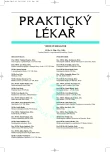Screening of colorectal cancer – reality and perspectives
Authors:
J. Špičák
Authors‘ workplace:
Institut klinické a experimentální medicíny Klinika hepatogastroenterologie Vídeňská 1958/9 140 21 Praha 4 Ředitel IKEM: MUDr. Š. Vítko, CSc.
Published in:
Prakt. Lék. 2006; 86(5): 254-259
Category:
Various Specialization
Overview
Colorectal cancer is one of the most common malignancies and the Czech Republic has the highest incidence per capita in the world. Its characteristic features predestine colorectal cancer to become the target of successful screening; several techniques are already currently available and more are being introduced. The most commonly used method is the guiac-based fecal occult blood test. The test itself is cheap, with a mean positivity of approx. 3 %; on average its sensitivity in colorectal cancer does not exceed 30 %. Therefore, it is necessary to repeat the test at regular intervals. Colonoscopy is highly sensitive but a difficult procedure. The advantage is the detection of pre-malignant lesions and their removal during one session, the problem is particularly the insufficient capacity of the endoscopic units and serious complications. Sigmoidoscopy is tolerable, but up to 25 % of adenomas and cancers are not located within the reach of the instrument. It can be combined with FOBT. Sensitivity of the double contrast x-ray is somewhere between FOBT and colonoscopy, but its future is without any perspective. Virtual colonoscopy is becoming popular in several regions, but it has not yet been incorporated into any guidelines as a standard test. Genetic testing of stool samples is a very sensitive method, but technically difficult and costly. Capsule endoscopy and single-usecolonoscopy are on the horizon as perspective imaging methods. Colorectal cancer screening is experiencing a rapid expansion, and it is not clear which method will prevail. The incidence and mortality reduction of 50 % within 10 years is realistic.
Key words:
colorectal cancer, screening, prevention
Labels
General practitioner for children and adolescents General practitioner for adultsArticle was published in
General Practitioner

2006 Issue 5
Most read in this issue
- Temporal arteritis and polymyalgia rheumatica – an acute condition in rheumatology.
- Congenital syphilis again on the scene worldwide. II. Clinical picture.
- Negative pressure wound therapy at patients with diabetic foot. (Vacuum Assisted Closure)
- Pulmonary aspergillosis – a fatal complication in a patient suffering acute promyelocytic leukemis
